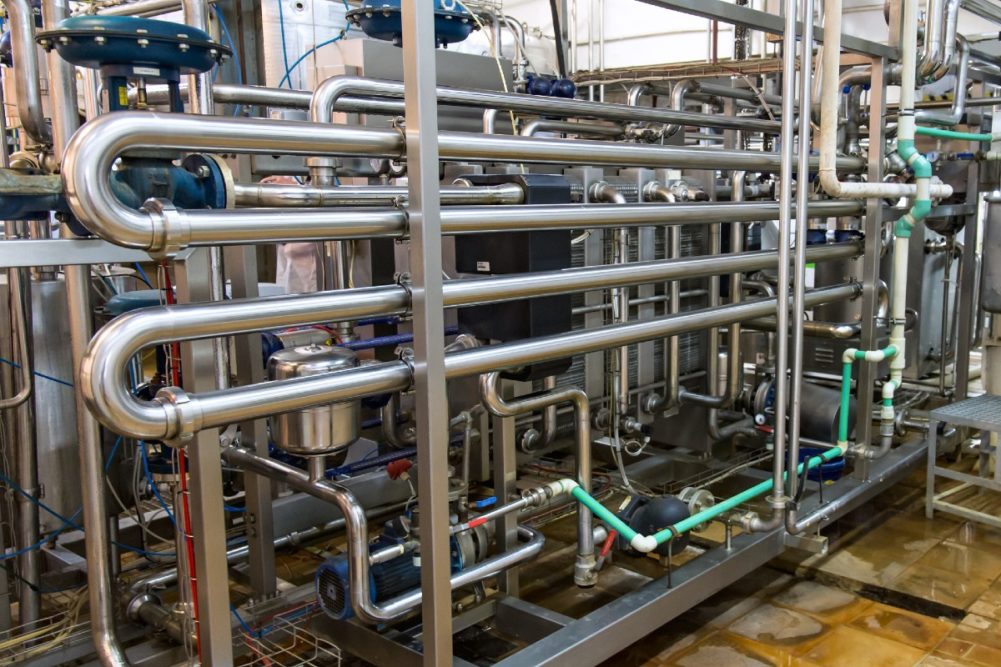Producing any type of food or beverage product likely involves heat treatment, which means the use of heat exchangers. Choosing the right heat exchanger, however, is highly dependent on the characteristics of the product – from its viscosity to the size of the particles. By matching the choice of technology to a specific application, it’s possible to achieve reliable and efficient heat transfer, which in turn ensures consistent product quality and helps to improve the overall efficiency of an operation.
Optimizing heat treatment to fit a product application is critical for ensuring food safety and quality – as well as for cost-effective and sustainable processing.
Reciprocal heat exchangers are suitable for viscous products which require gentle handling, while rotating is more suitable for products which benefit from vigorous handling or mixing. The type of heat exchanger will also be influenced by the rise of fall in temperature required and the heating or cooling medium employed.
While tubular heat exchangers are useful for many dairy product applications, some more challenging processes – such as pasteurizing or cooling thick, viscous, sticky or particulate products – require a more robust solution, such as scraped surface heat exchangers.
Scraped surface heat exchangers (SSHEs) typically consist of two key components within the tube: the scrapers and a scraper bar.
First, the scrapers work to constantly remove product from the tube surface to prevent the build-up of a fouling layer, which would otherwise reduce heat transfer.
Second, the scraper provides a mixing action within the product as it passes through the heat exchanger, ensuring that heating or cooling occurs evenly within the product. Many designs actually help push the product through the tube, ensuring even flow and heat transfer.
Other considerations
Because of the increased resistance within the tube, SSHEs can create much higher pressure drops than open tube heat exchangers. A higher-pressure drop means more pressure and energy is required to operate the equipment, and in some cases the higher pressure can create a shearing force which physically splits or damages the product.
SPX FLOW, Inc., Charlotte, NC, a provider of process solutions, released an updated version of its vertical scraped surface heat exchanger, the Waukesha Cherry-Burrell Votator II, in early 2023. The Votator has been on the market for about 20 years. The updated vertical Votator II offers dual lift capacity with controlled alignment to ensure efficient operation.
“Food processors have very specific, rigid cleaning and inspection requirements, whether daily, weekly or monthly,” said Con O’Driscoll, global product manager for Dispersion Products, SPX FLOW. “We worked with our customers to hear their challenges and upgrade our equipment to make their work easier, quicker and safer.”
Improved components include alignment pins, guide rollers and a guidance system. These updates offer easier re-assembly operations and more efficient lifting and lowering.
“The options here fulfill many different industry requirements, applications and needs,” O’Driscoll said. “By ensuring that wide availability of options, from vertical to horizontal, the Votator II is built with versatility and durability in mind.”
Contherm scraped surface heat exchangers from Alfa Laval, Lund, Sweden, are also a solution for a range of applications. Each unit is engineered to handle viscous, heat sensitive, crystallizing or sticky products, as well as those with sensitive particulate matter.
The HRS Unicus Series from HRS Heat Exchangers, Atlanta, is designed to provide the improved heat transfer of a traditional SSHE, but with a gentle action to preserve the quality and integrity of delicate food products such as cheese, yogurt, ice cream and products containing whole pieces of fruits or vegetables.
The rotating scraping technology continuously removes fouling material during processing. With both single and double-wall scraped-surface heat exchangers, they have multiple applications. Gentle handling preserves the quality of shear-sensitive products while simultaneously providing high efficiency with a larger flow area and reduced pressure drop.
A number of different scraper designs have been developed over the years, meaning that every application, from processing curds to heating sauce, can be handled in the most efficient yet gentle way possible. Product type, capacity and the total cost are major factors for processors when considering the type of heat exchanger in which they choose to invest.

